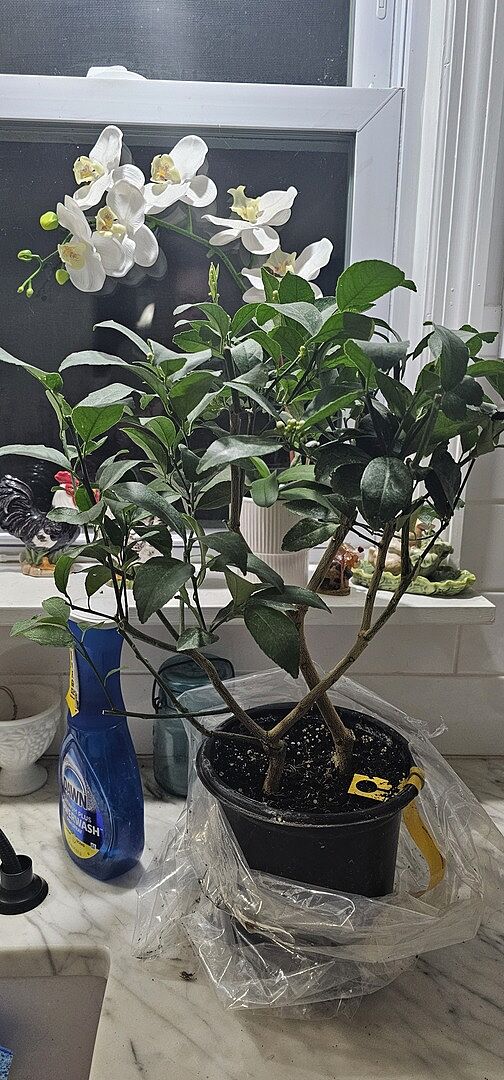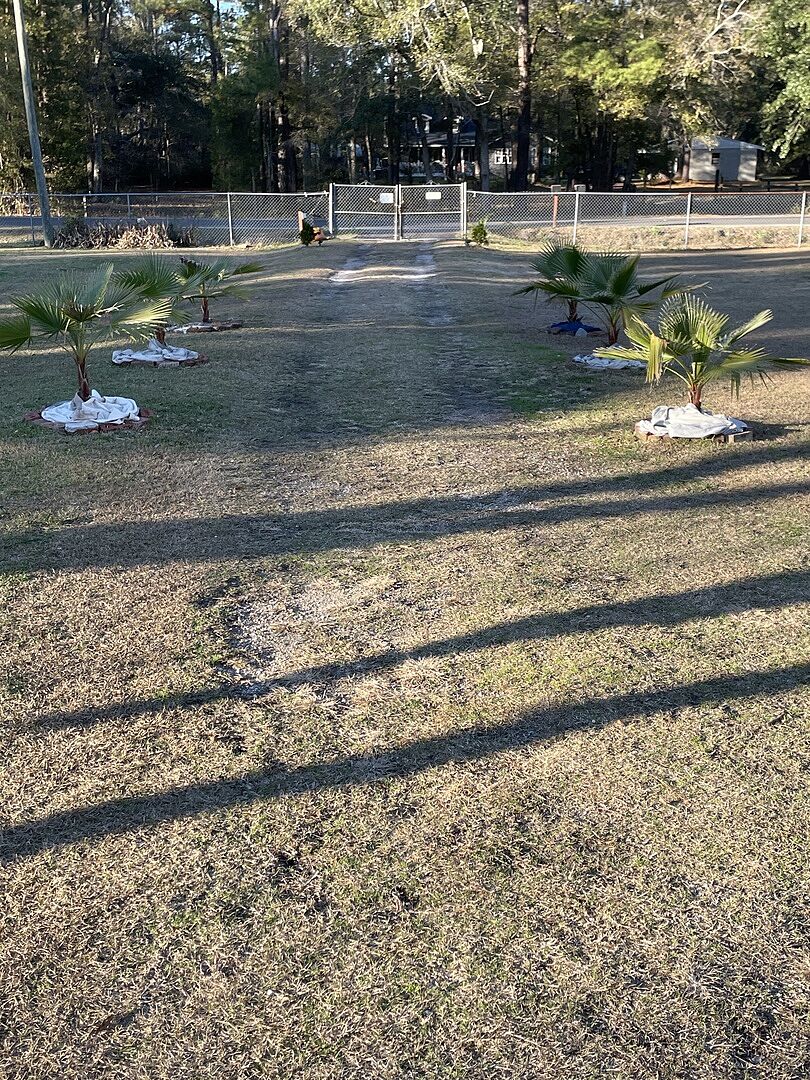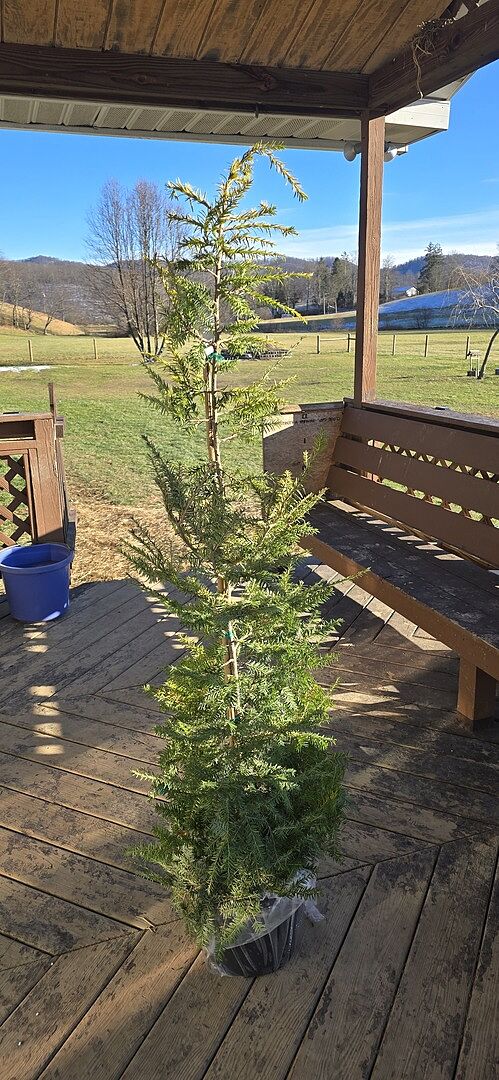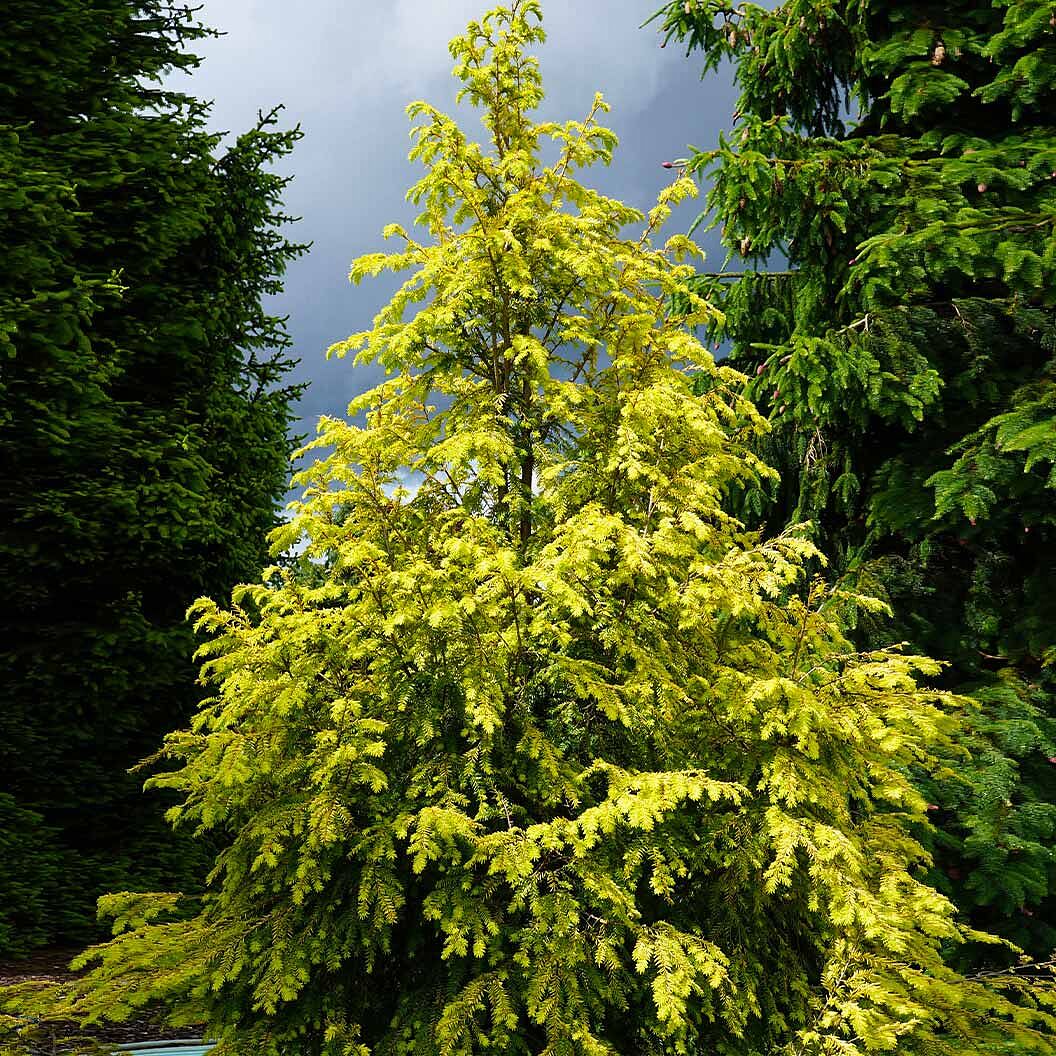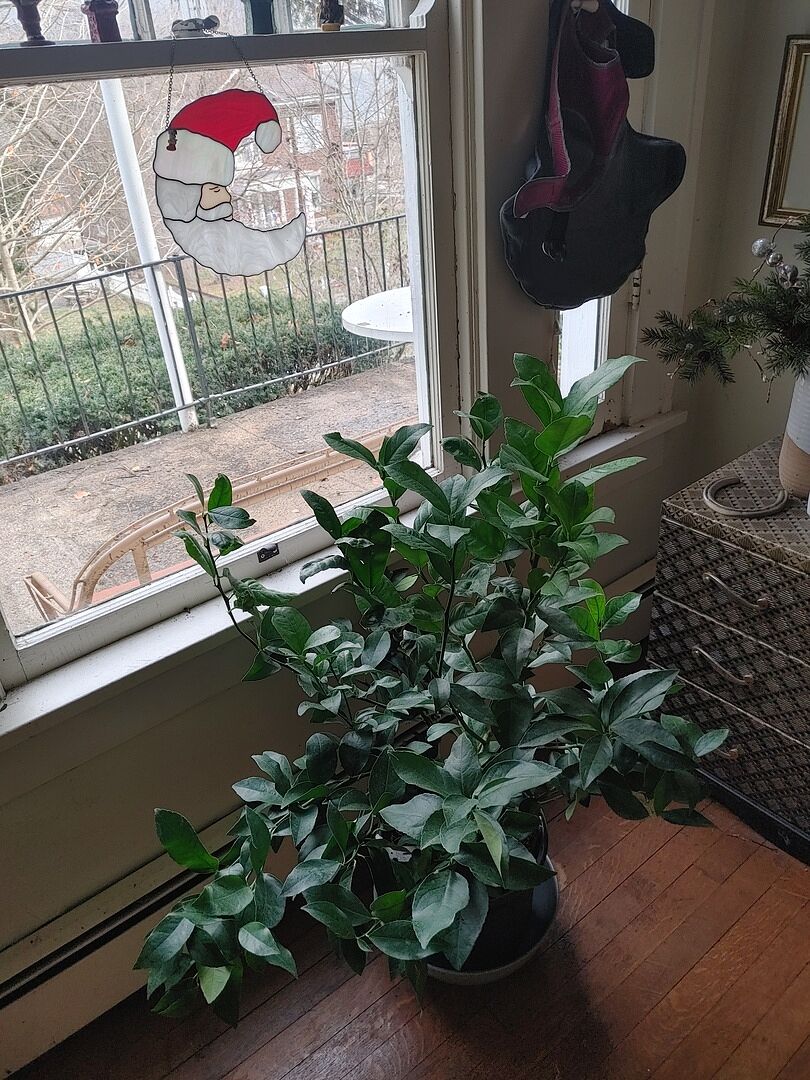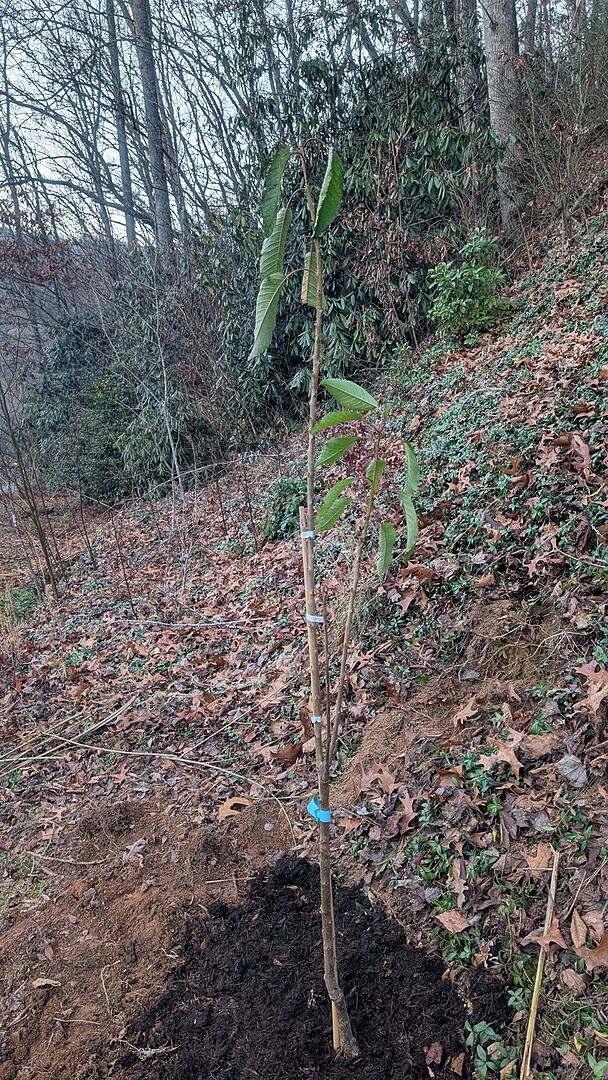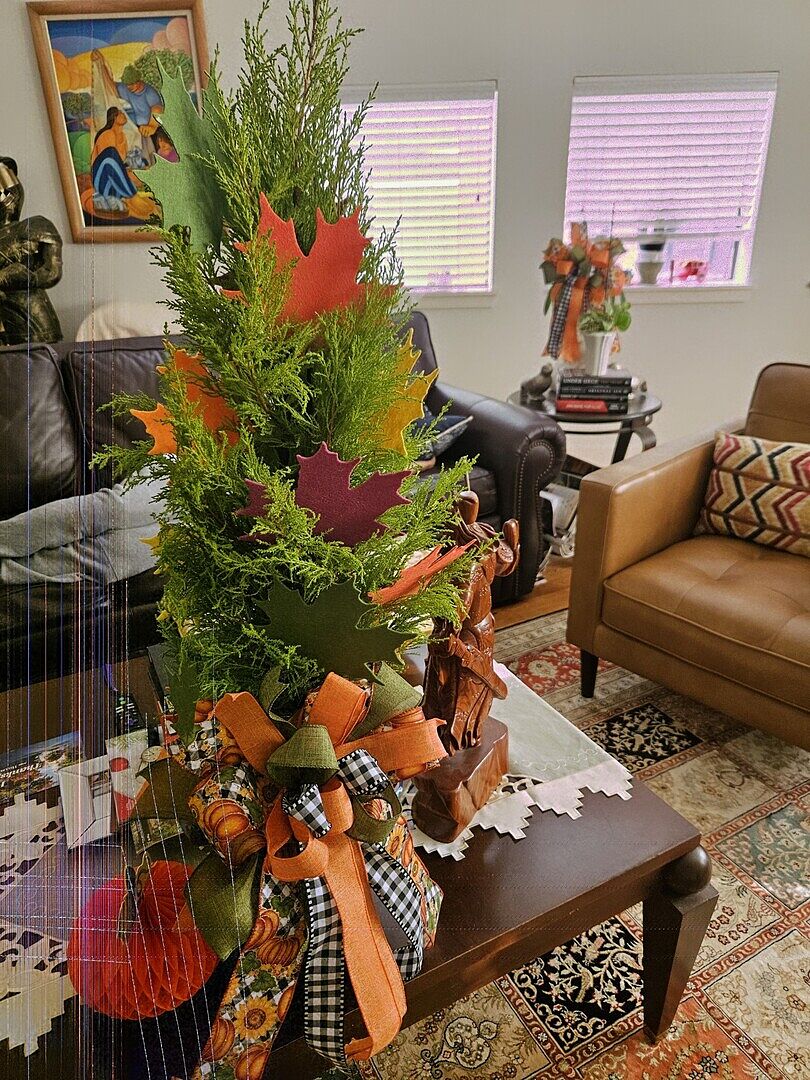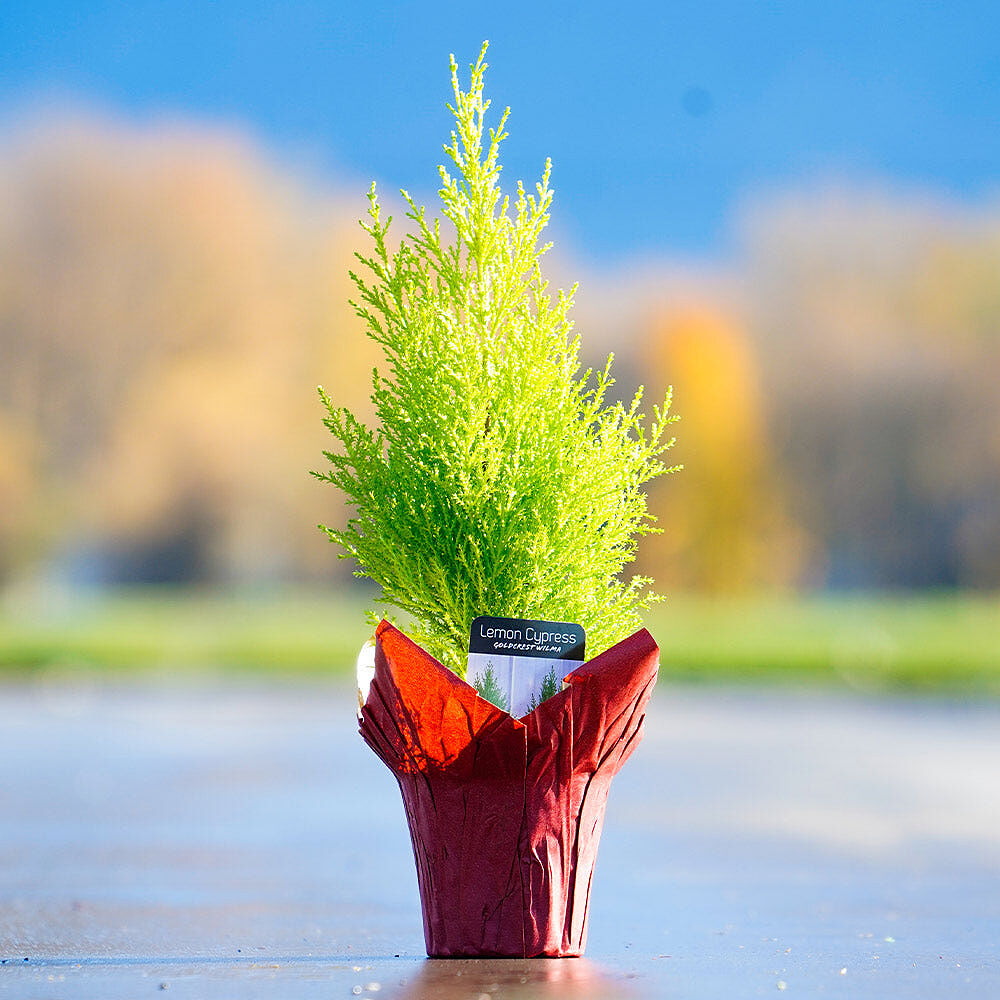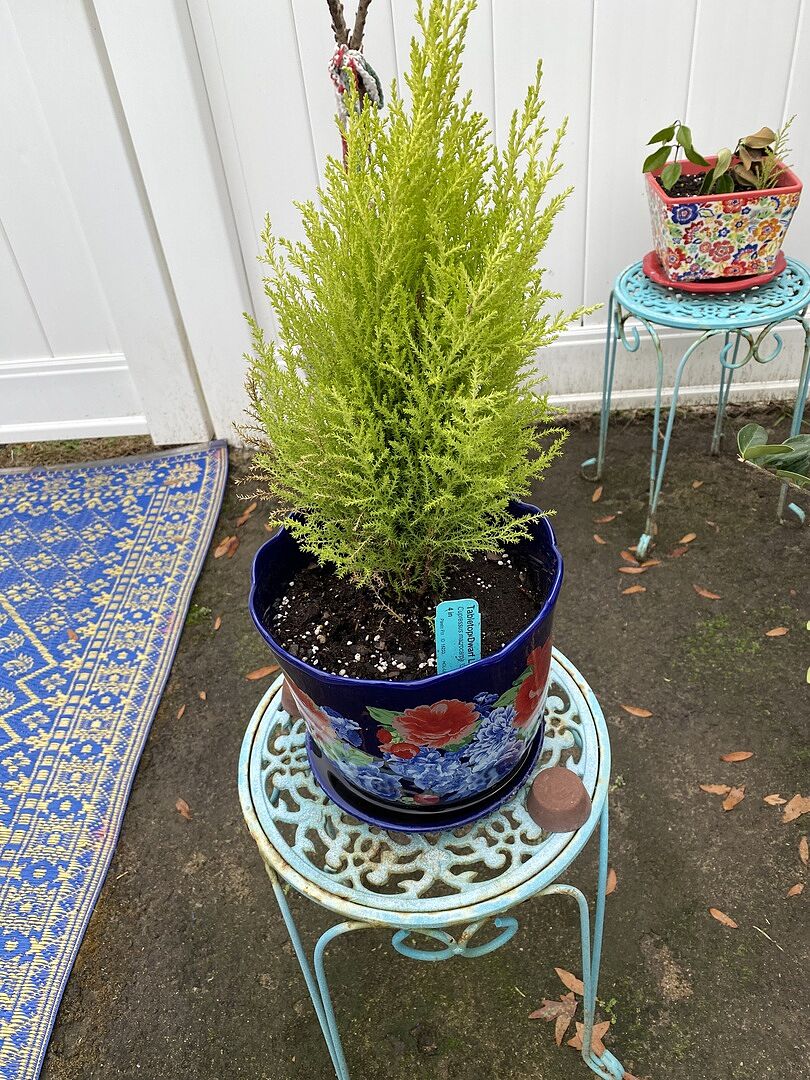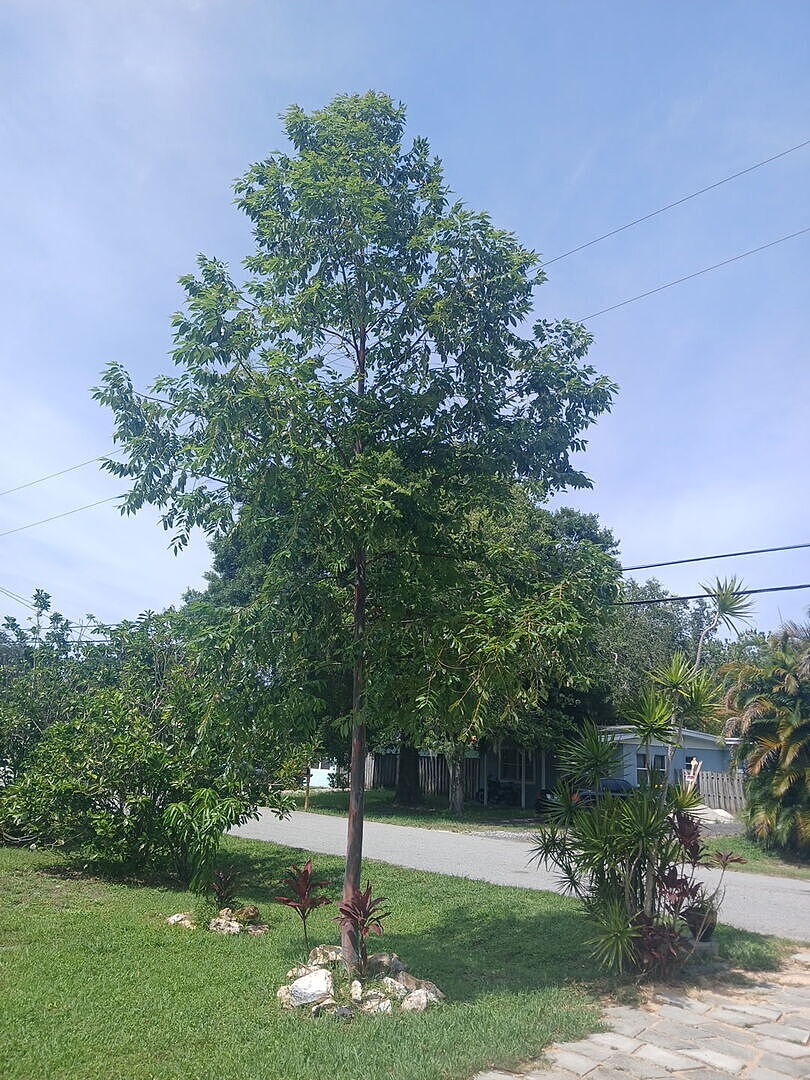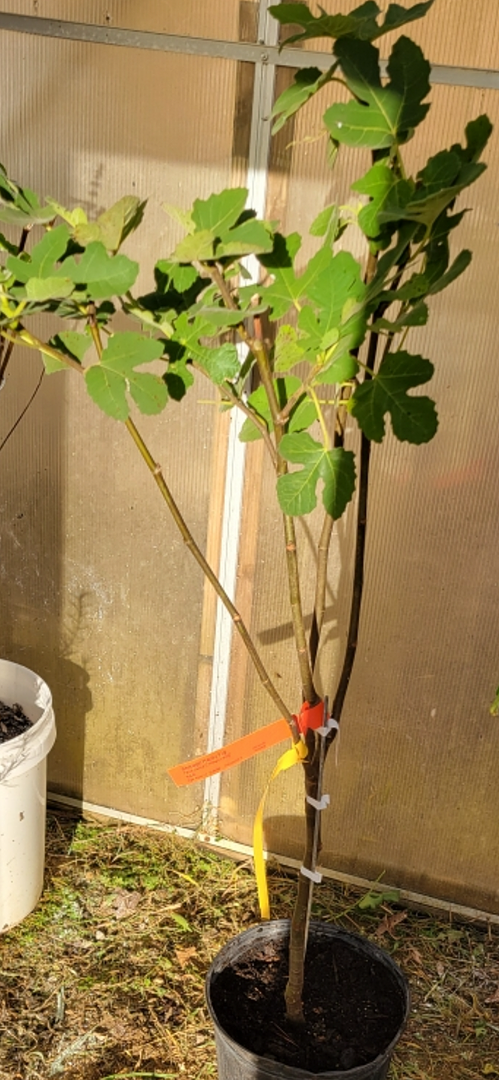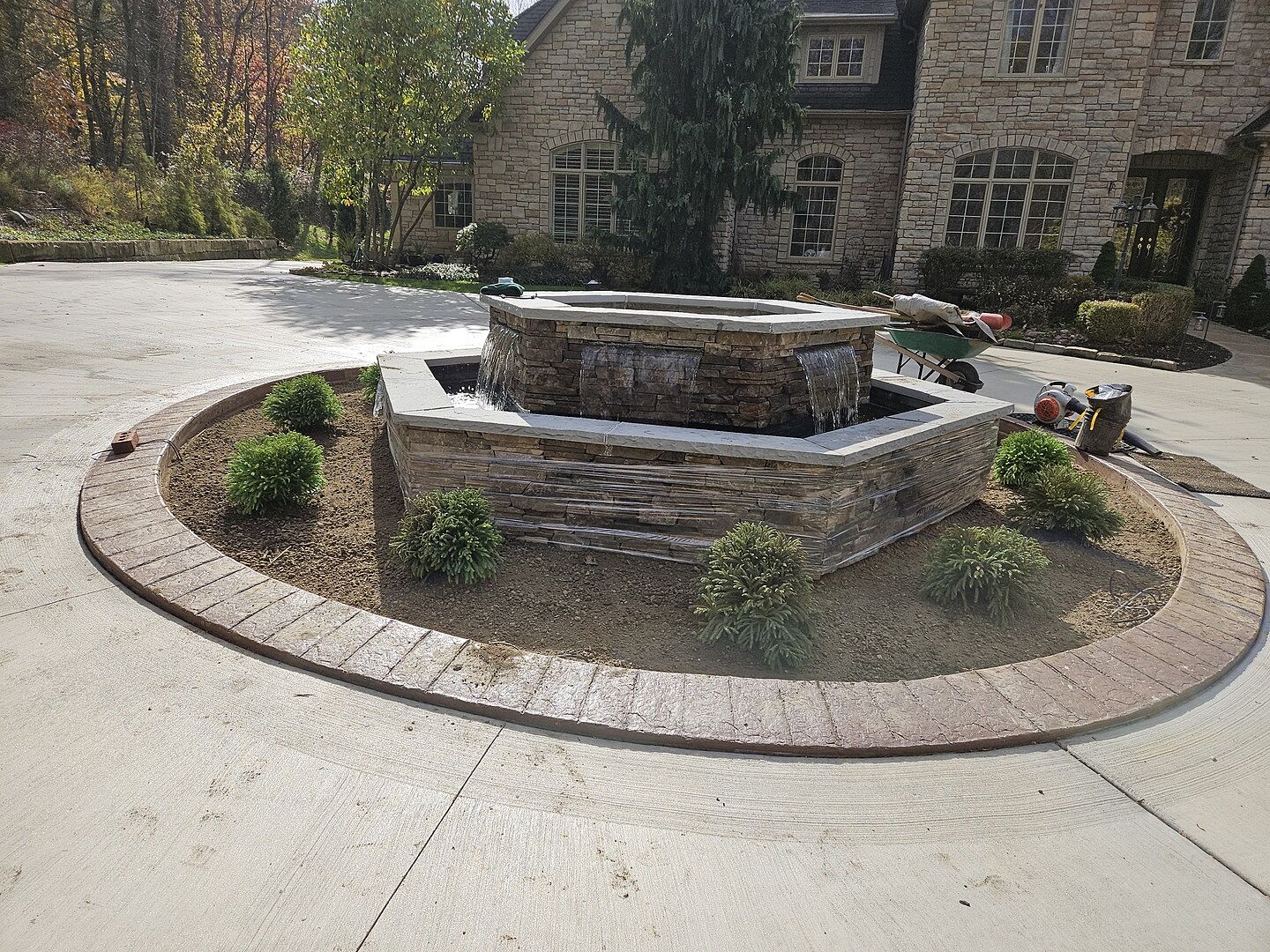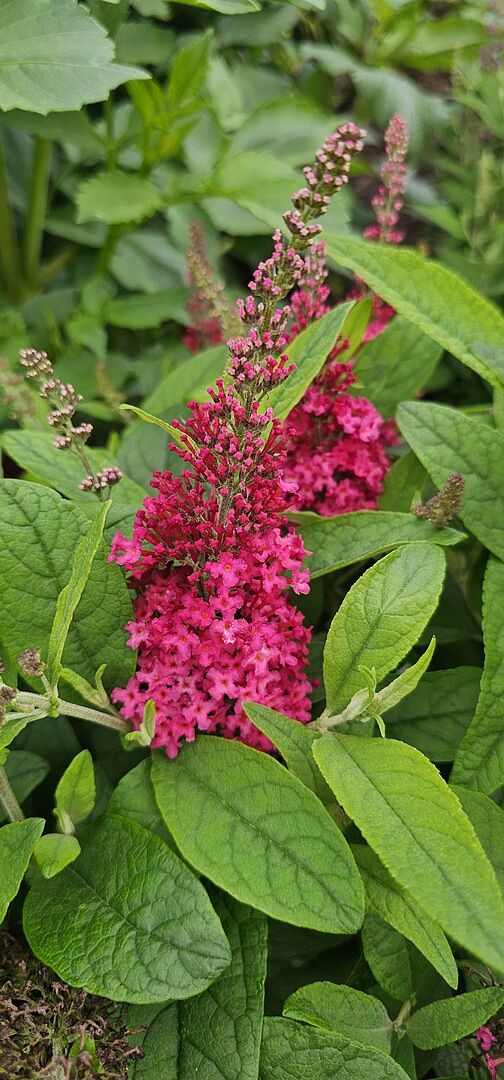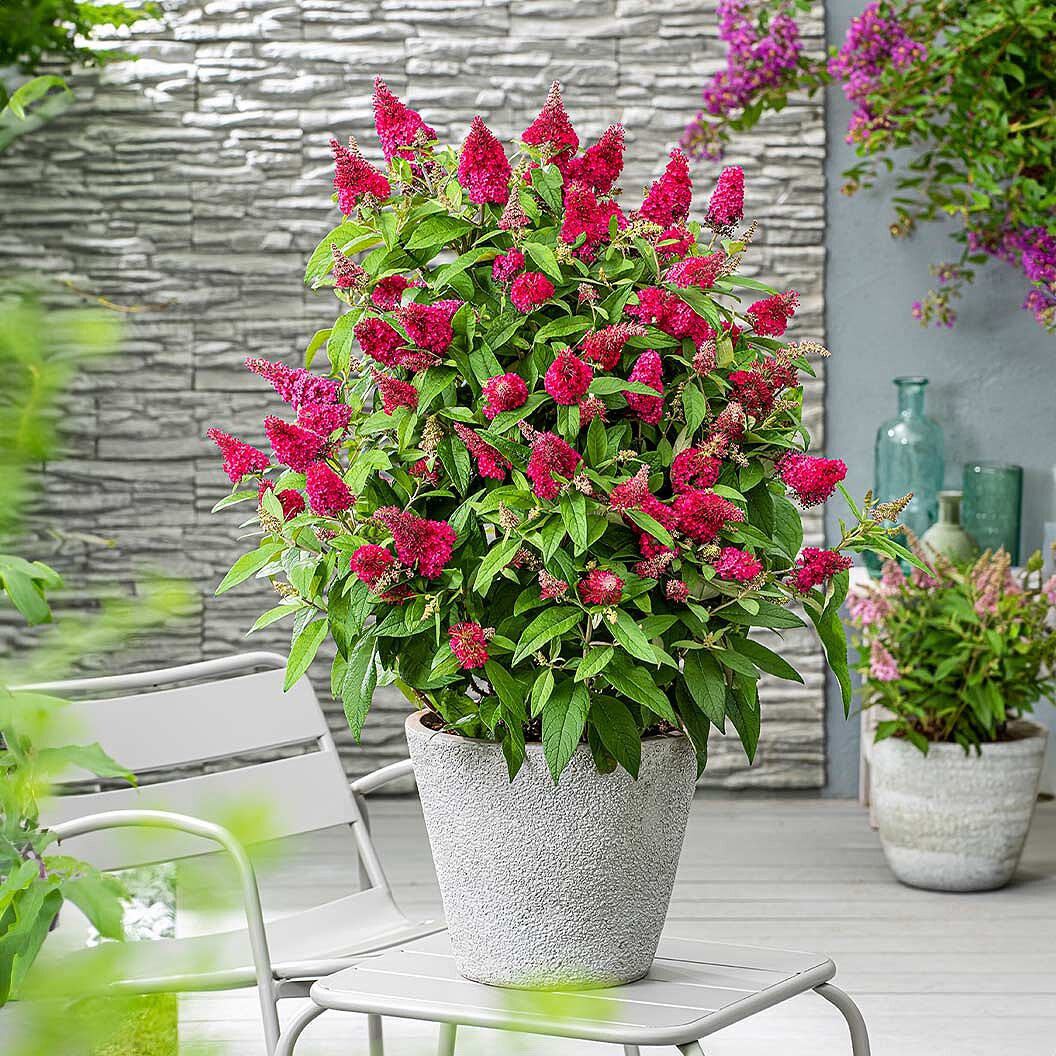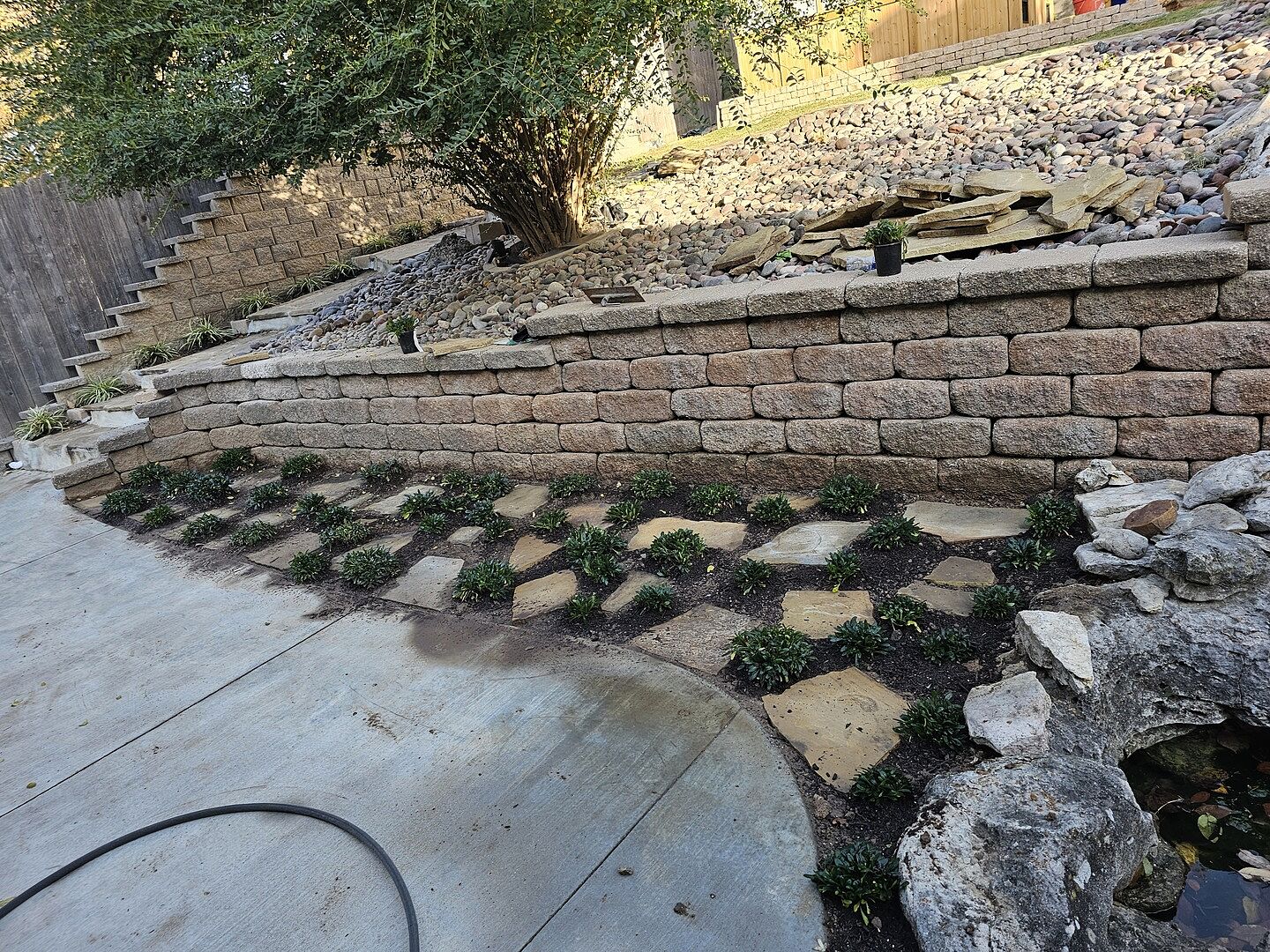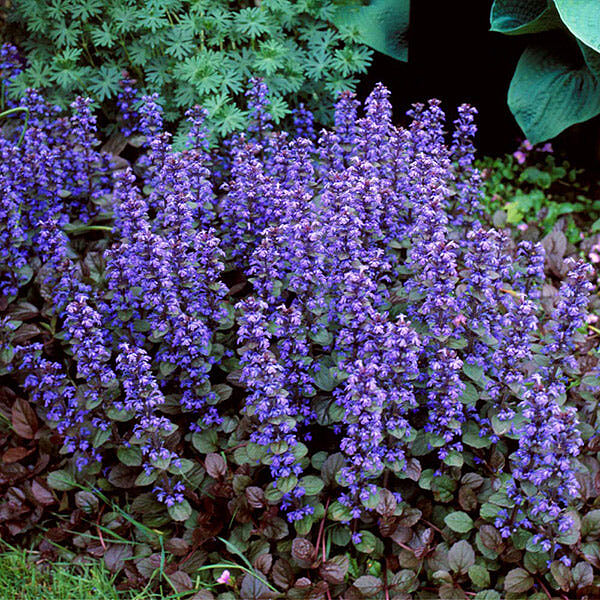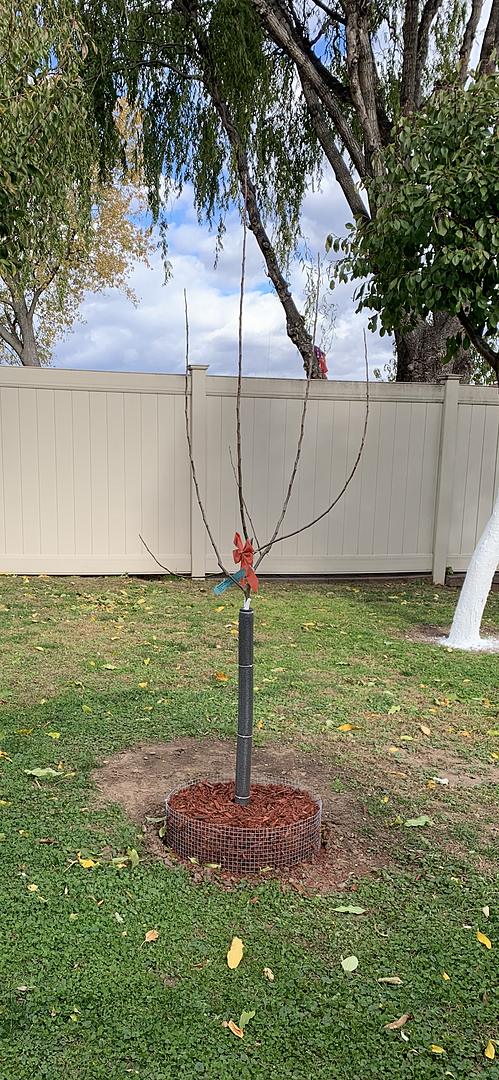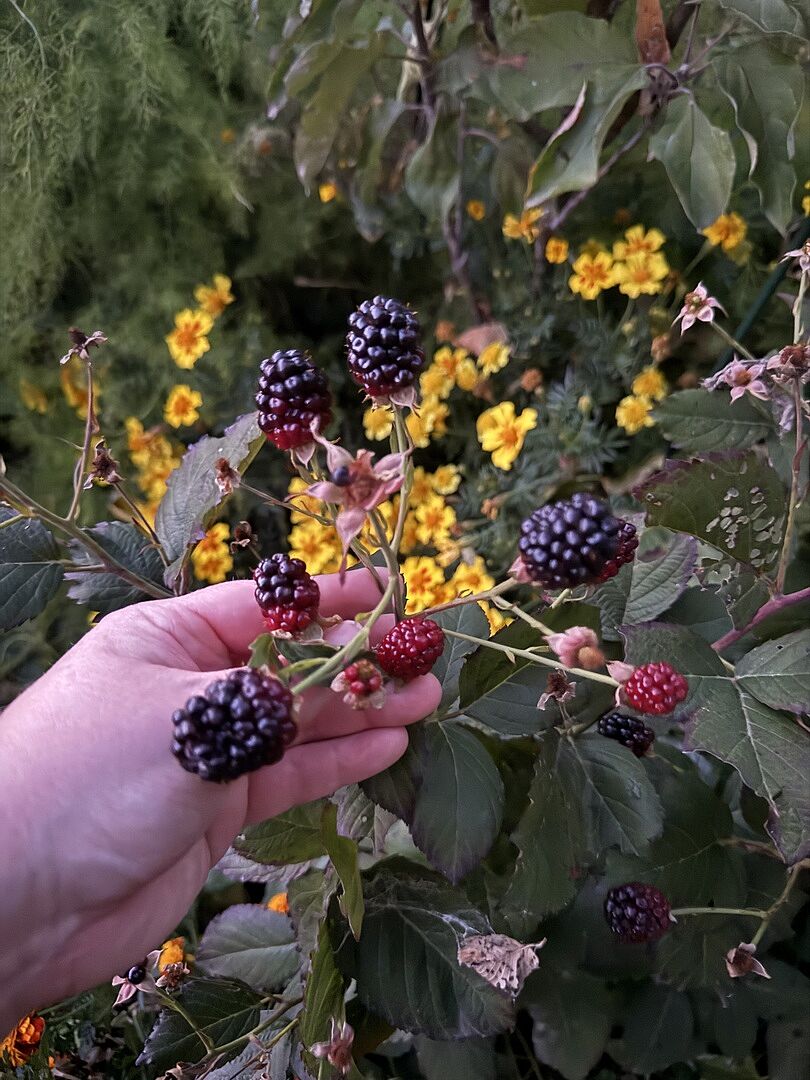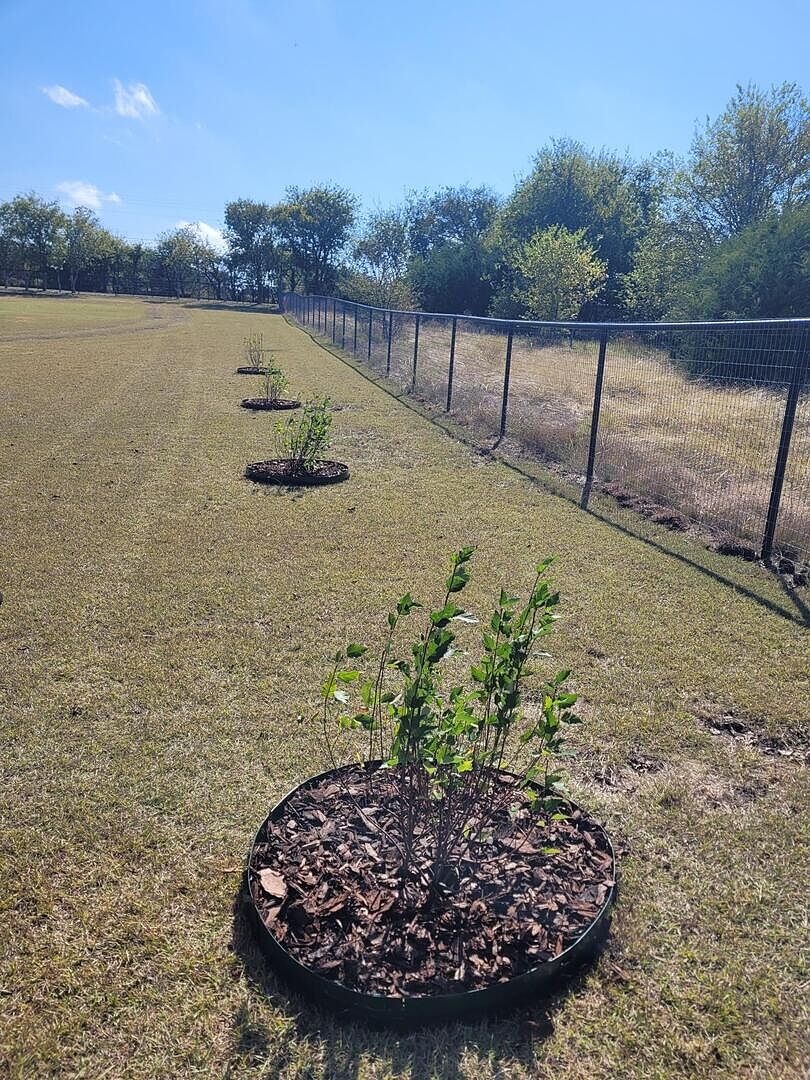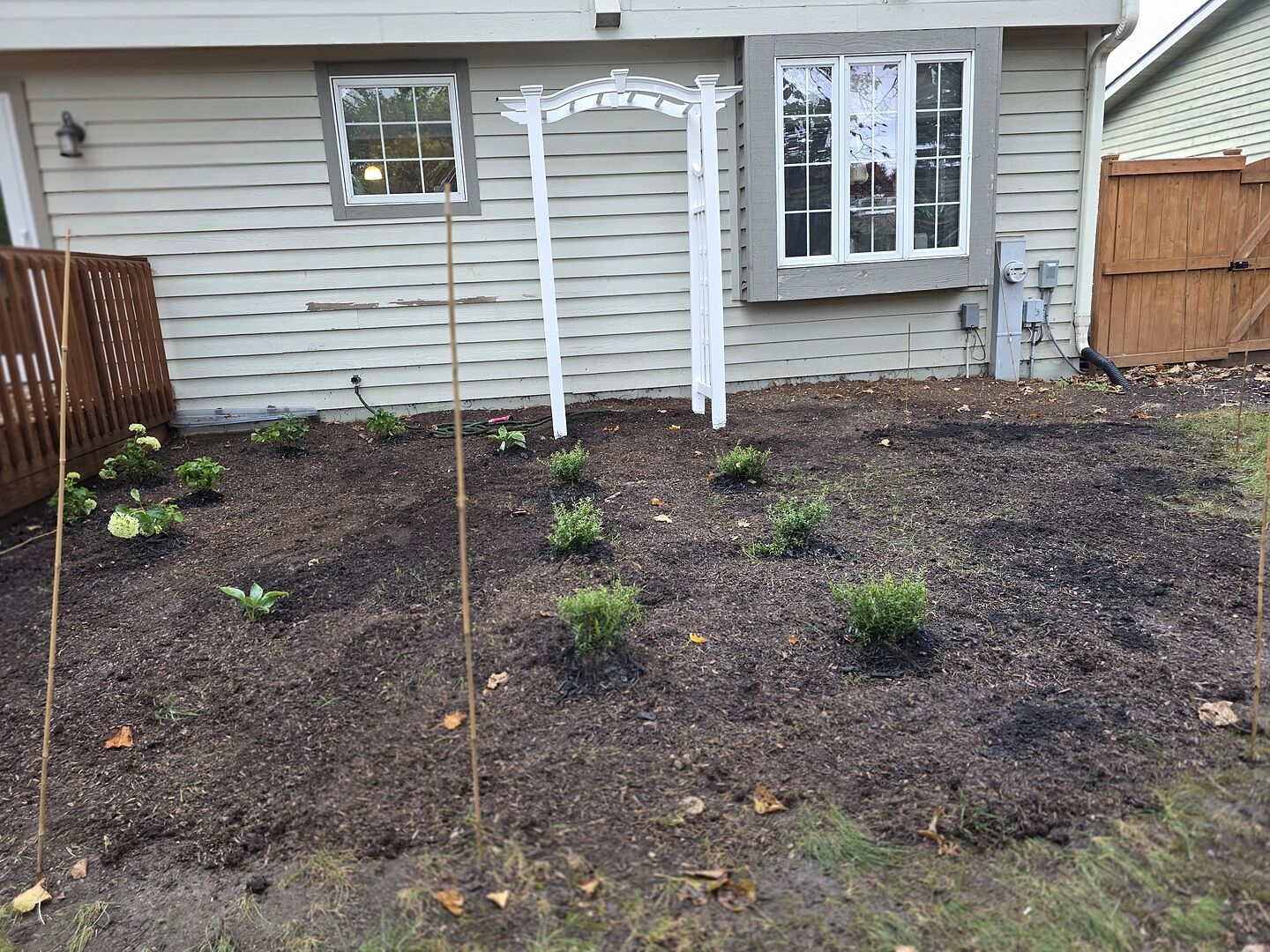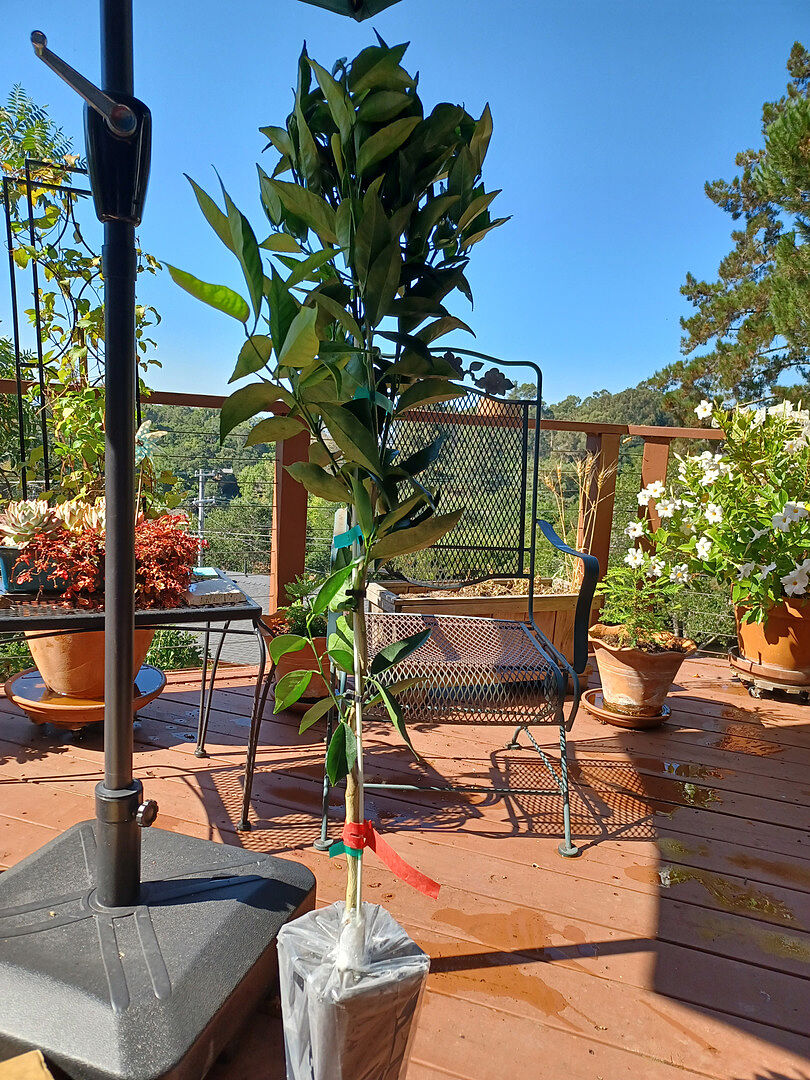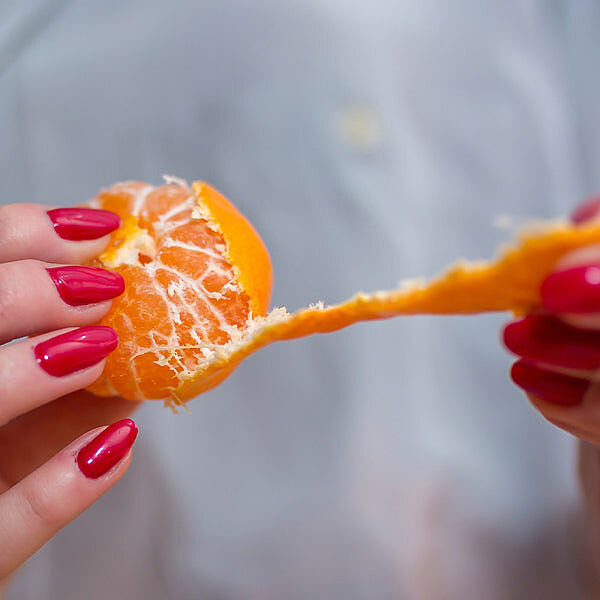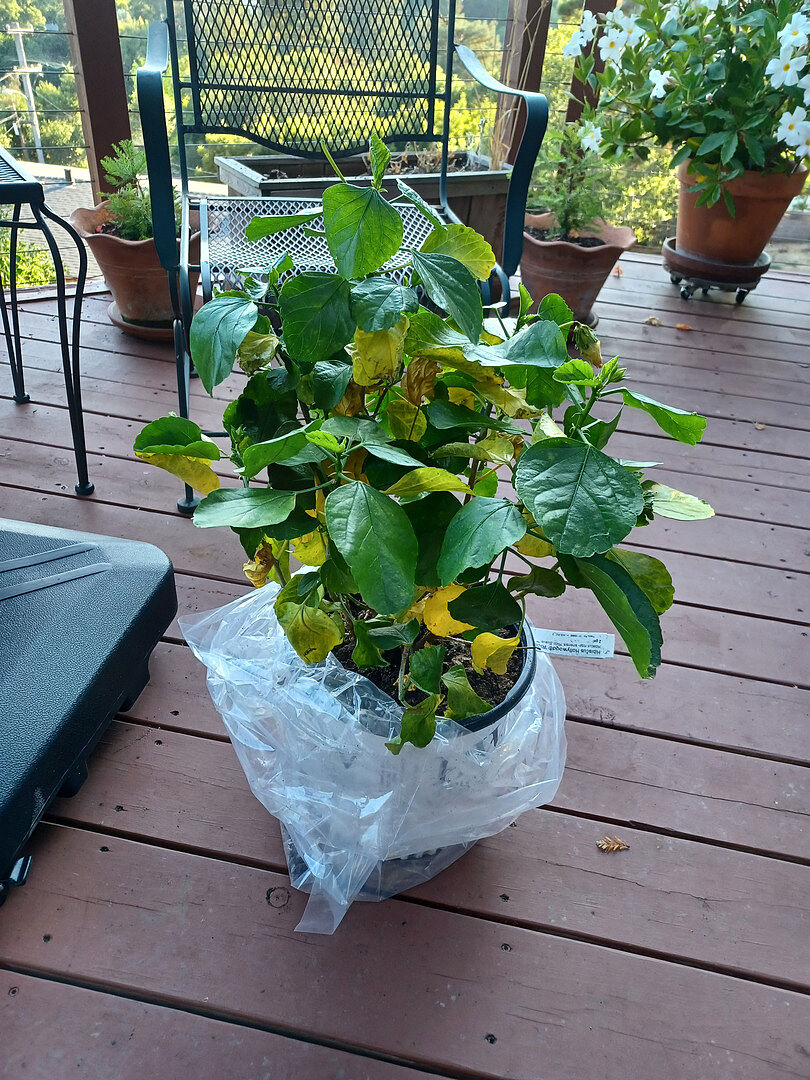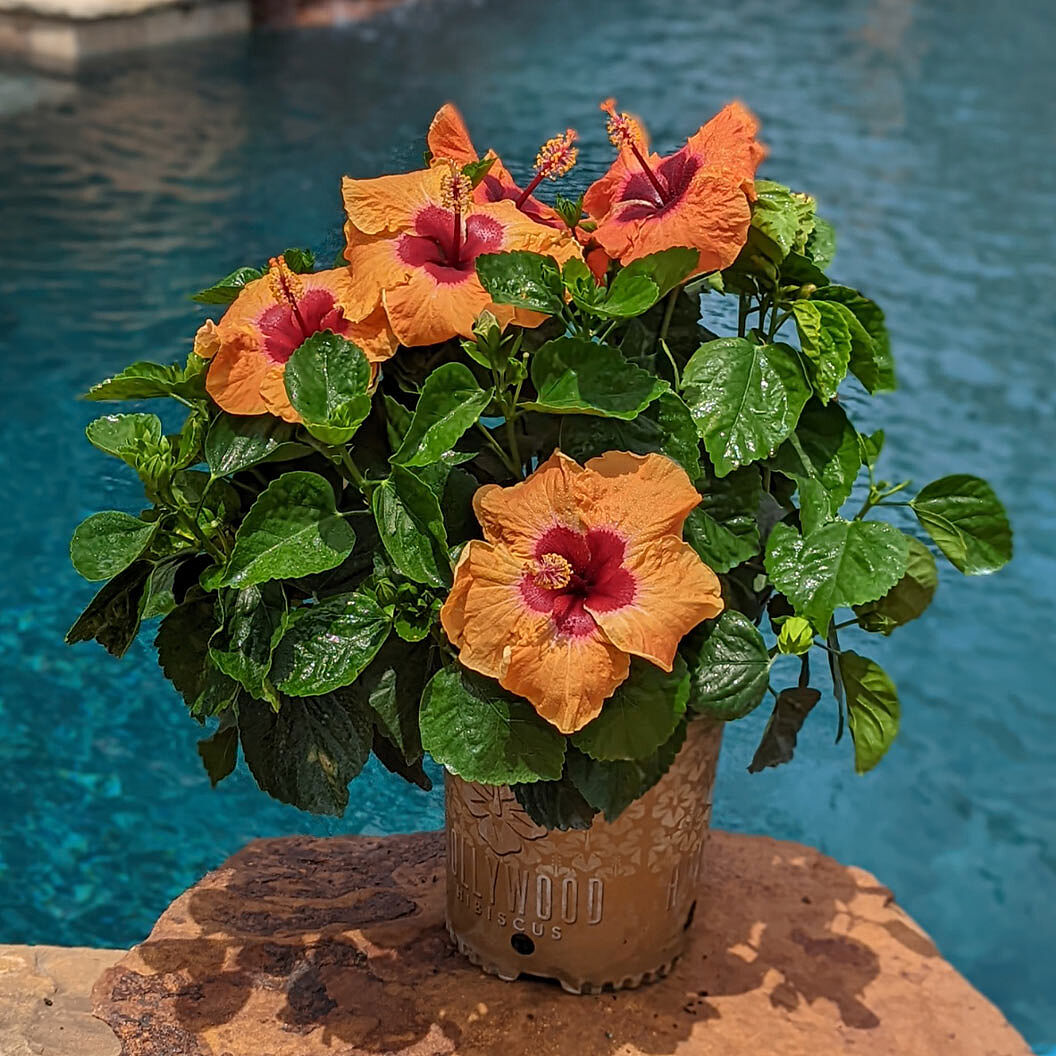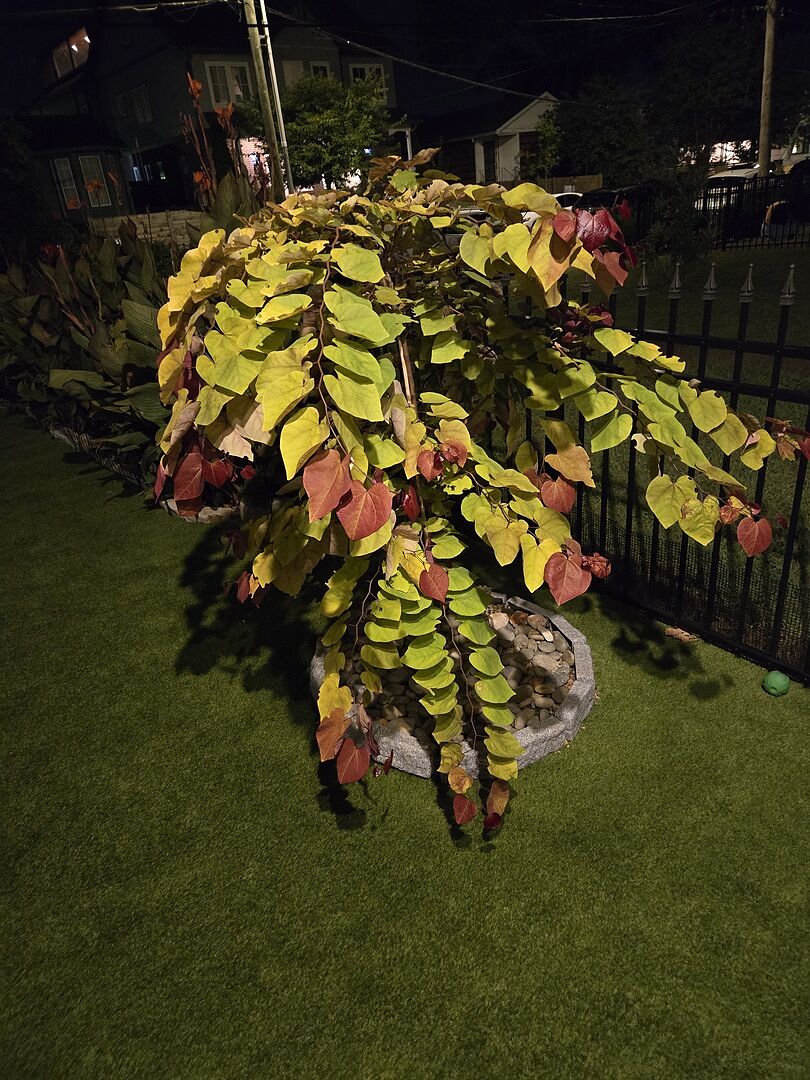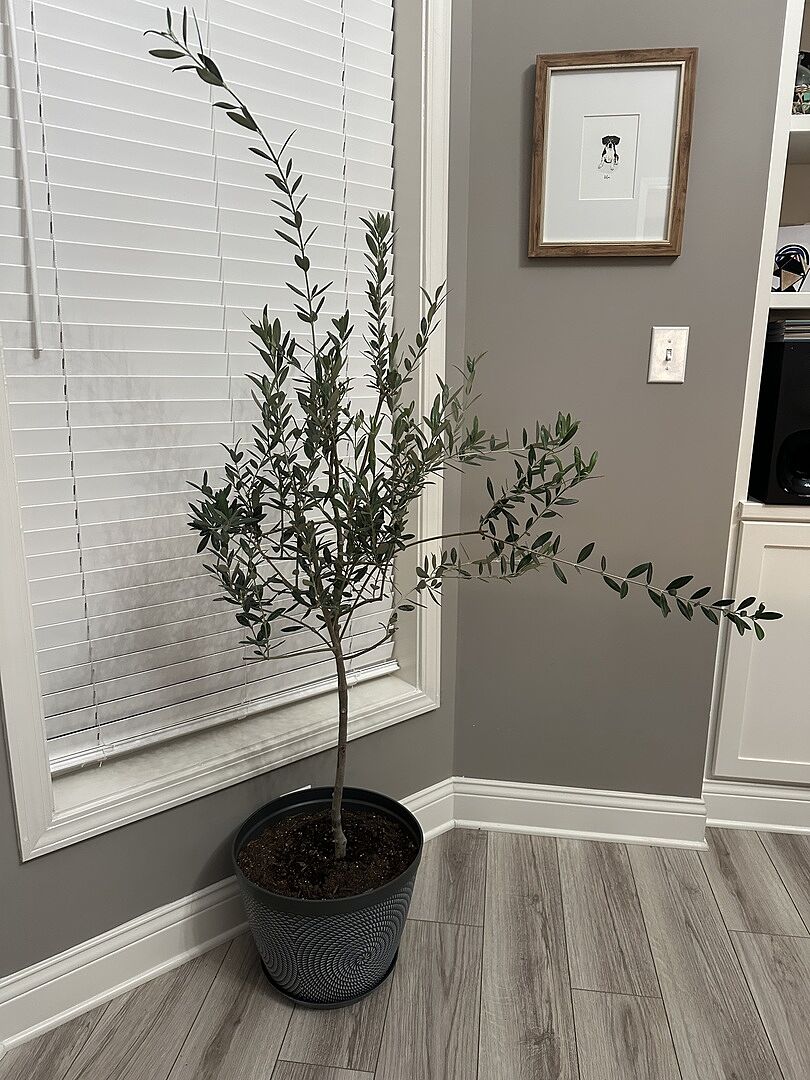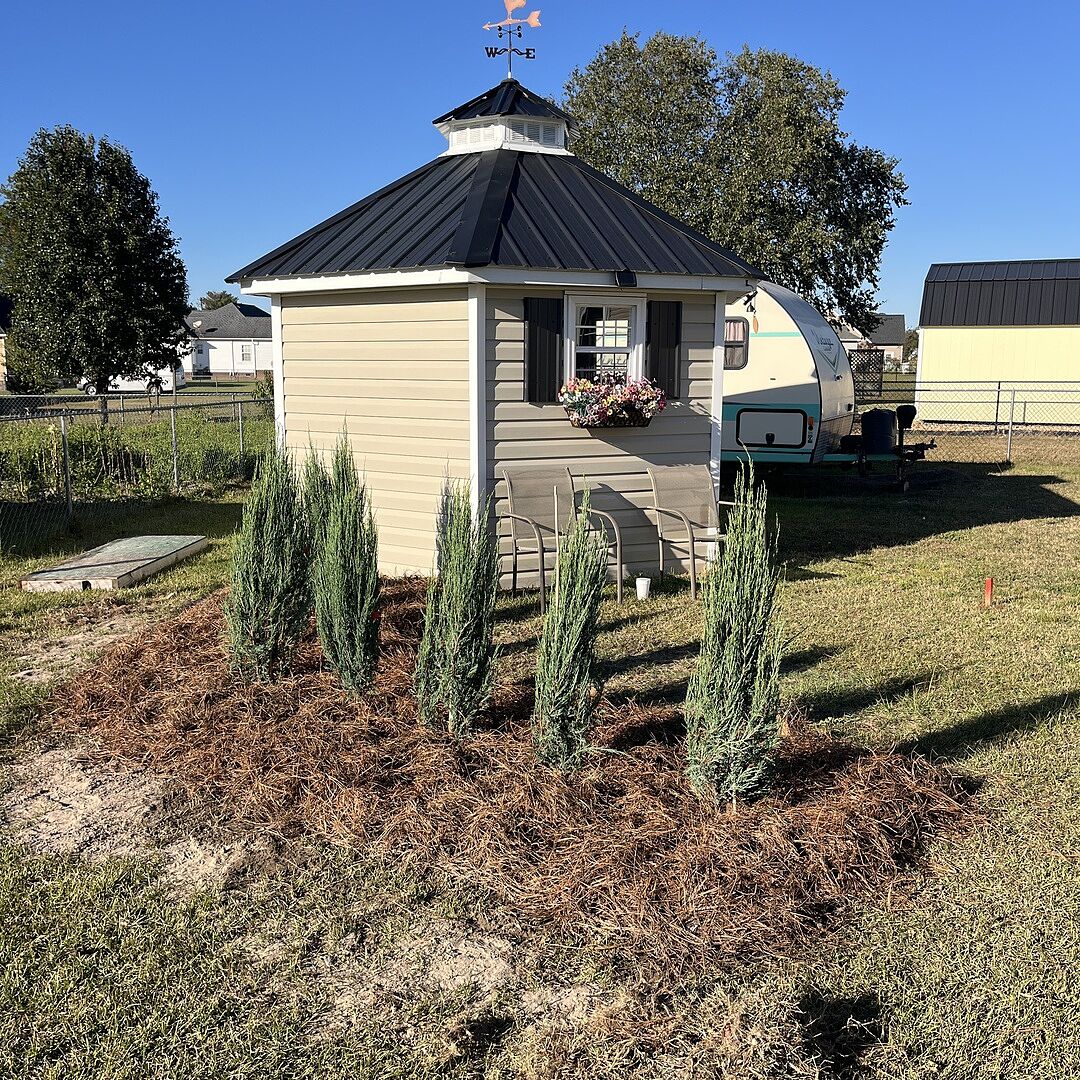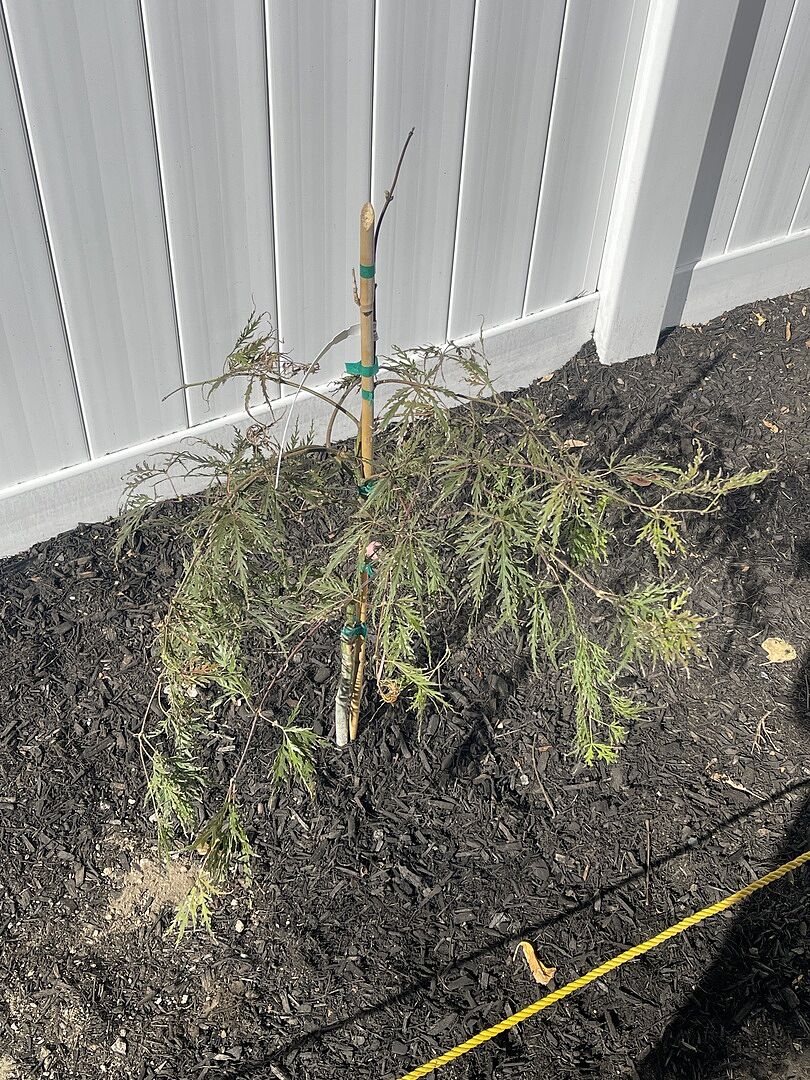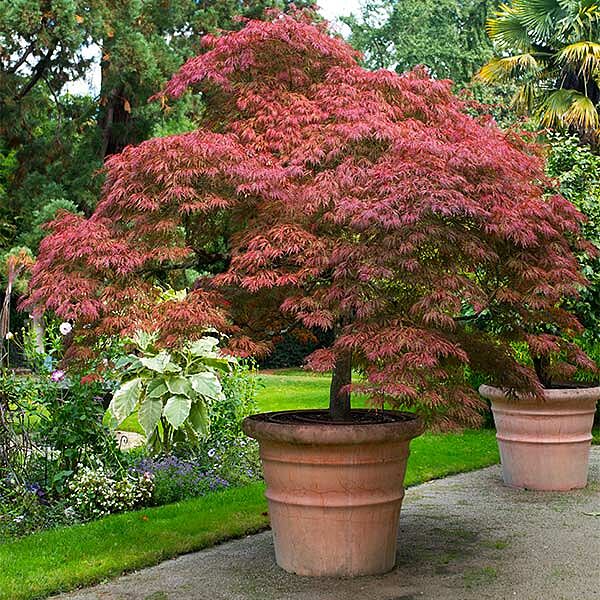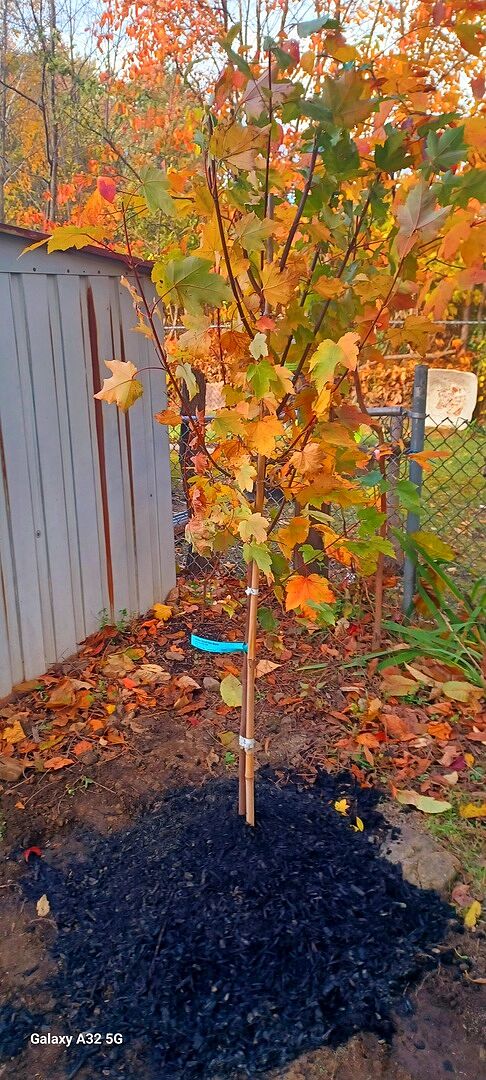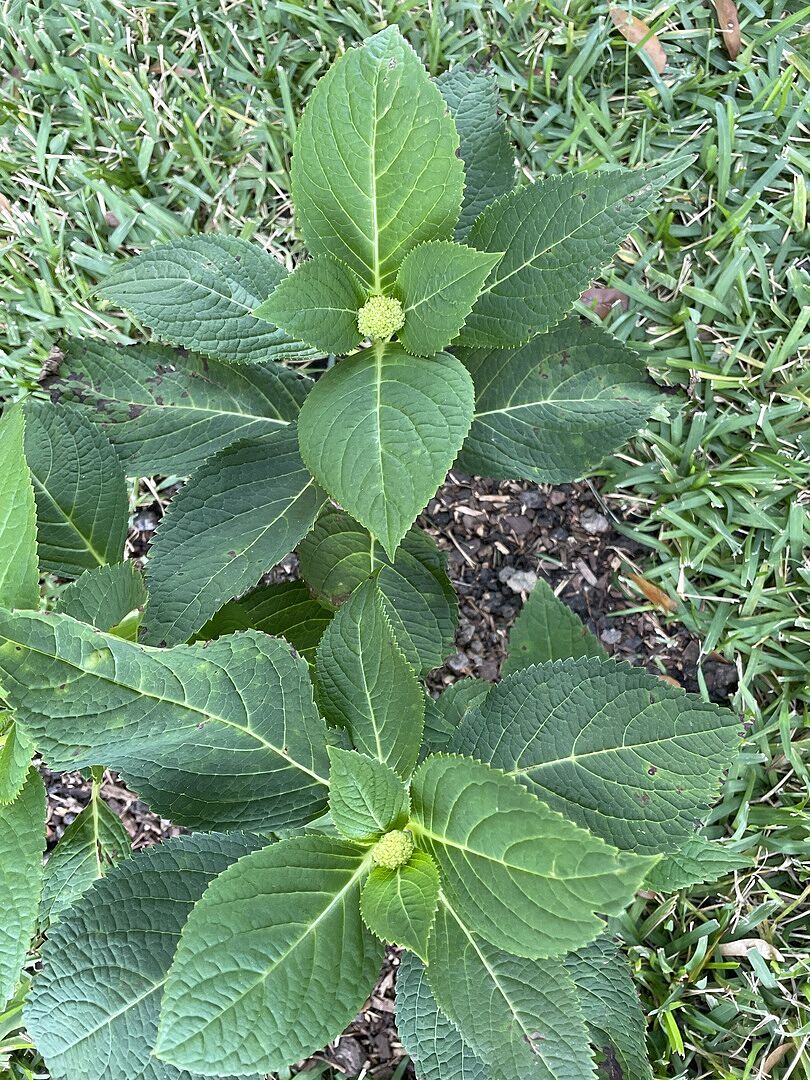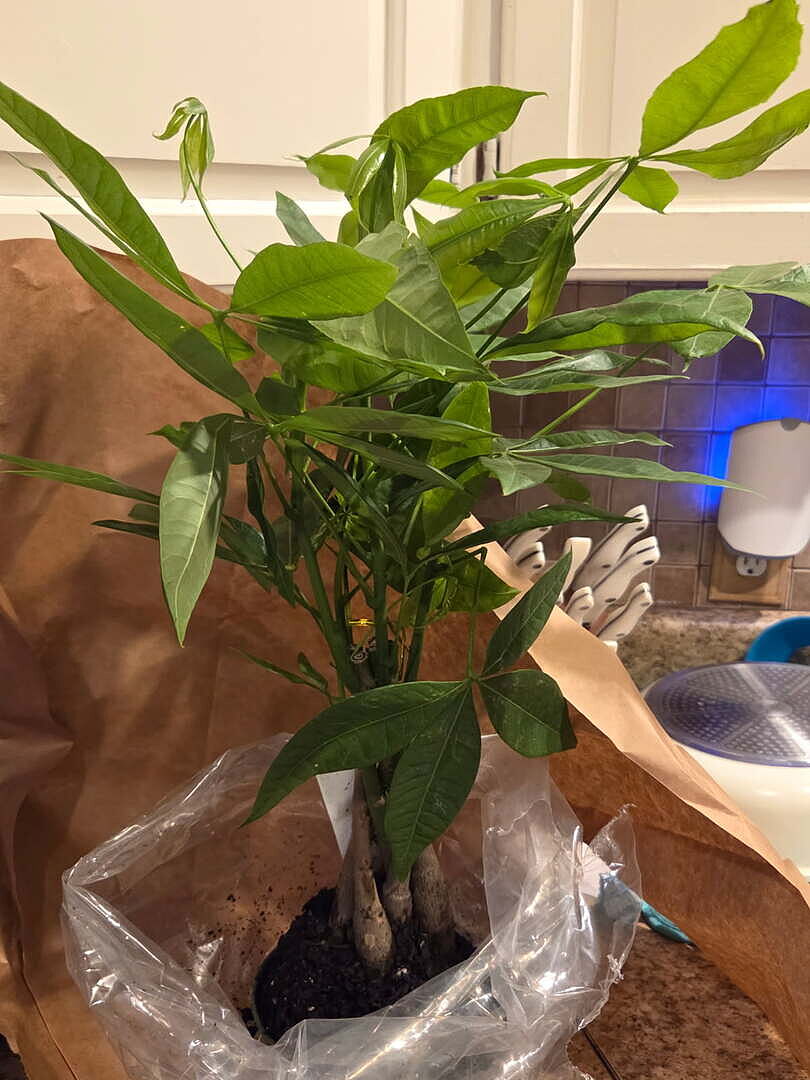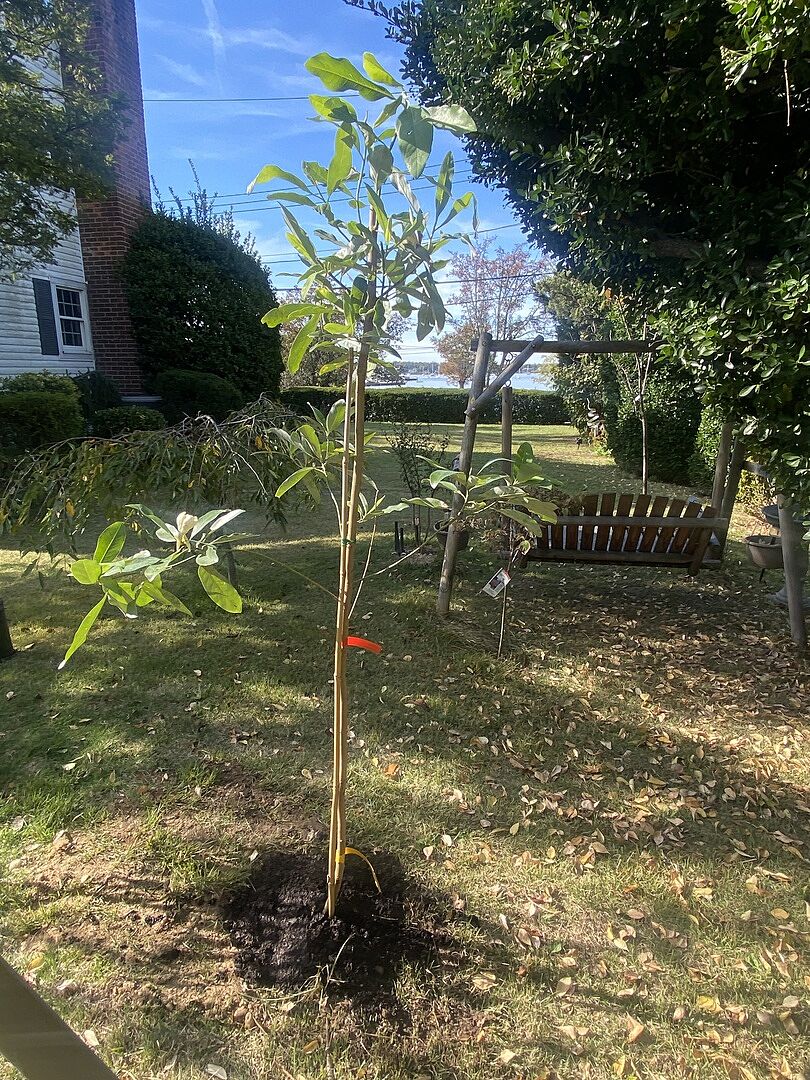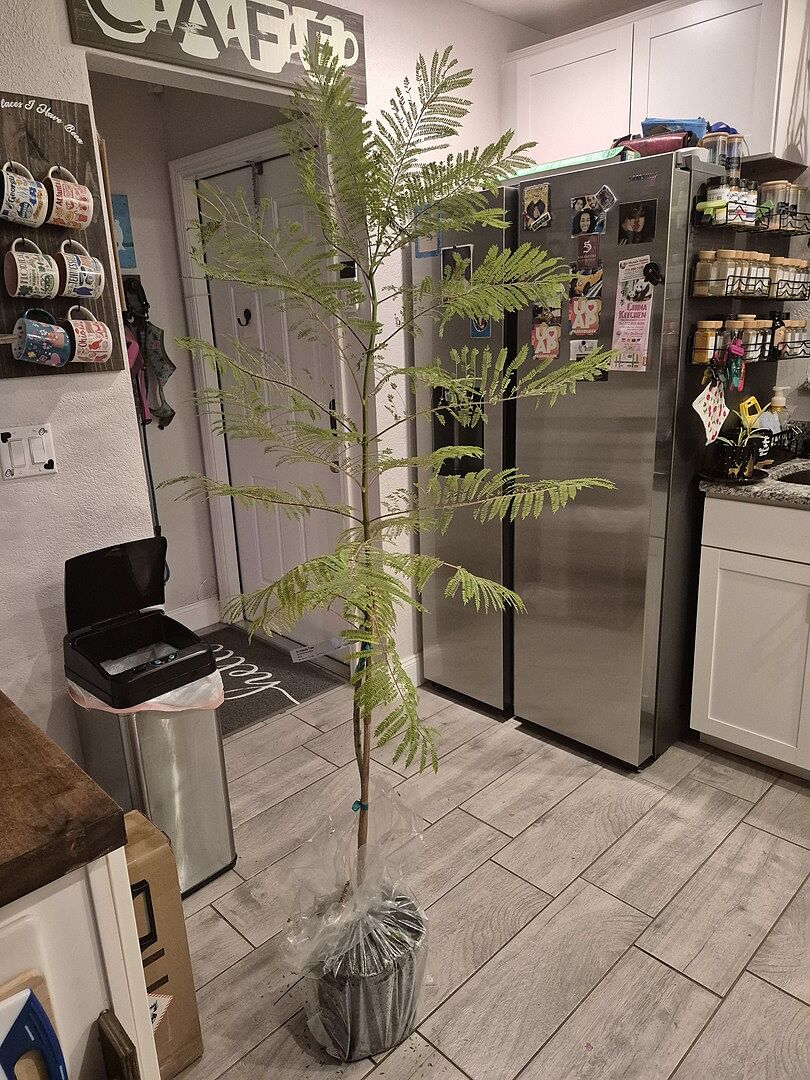Fruit Trees 101: Choosing & Planting

Last updated: May 01 2023

Check out our full Fruit Tree Buying Guide for easy-to-digest tips and tricks.
Growing your own fruit has become more popular over the years, and for good reason! Producing your own fruit saves money, benefits the environment, and is overall healthier. Plus, we can admit there’s a certain feeling of accomplishment that comes along when you get your first harvest after all the time and effort you’ve put into caring for your tree.
At the same time, while it's a great idea to grow your own fruit, putting it into practice can be a bit more challenging. If you’re going to invest your time and energy, you want to guarantee you’ll actually reap the rewards. This is where careful selection of the varieties of fruits you decide to plant comes into play.
Pressed for time? Skip to a specific section using the links below!
- Understand Your Landscape
- Get to Know Your Soil
- Answer These Questions FIRST
- Pick the Right Plant Type & Size
- Home Orchard Layout & Spacing
- Example Orchard Layouts
- Permaculture Methods to Boost Your Fruit Yield
Keep reading to learn how you can choose and plant fruit trees, and watch below as @backyard_gardener_rach walks us through the fruit trees she chose for her specific space!
Understanding Your Area
All plants take time, and fruit trees do require patience when you first start out. To make sure you have the best possible outcome, start with the environment before you plant.
Growing Zones
Growing zones come from the average temperatures in an area and are categorized numbered groups. Typically in the U.S. you’ll see zones ranging from a 2 along the Canadian border down to a Zone 10 on the tips of Florida and Texas. Sometimes you might even see an “a” or “b” after the zone to further divide it. To find your growing zone, head to the dropdown at the top of our website—all you need is your zip code.
The idea of growing zones exists to give you a range of temperatures (hot and cold) in the area that will be suitable for a type of plant. So, if you’re in Michigan, chances are you're not going to have much luck growing an avocado tree outdoors because it’s a tropical plant that needs heat to survive.
Think of growing zones as more of a strict guide and not the law since there are always exceptions and more that makes up your environment than just the temperature. Don't make the mistake of only looking at the growing zone and thinking you’re good to go. Growing zones fail to incorporate things like humidity, micro-climates and chill hours that are vital to fruit production.

Chill Hours
Speaking of chill hours, these are the number of consecutive hours between the temperatures of 34° and 45° F. It's okay if you’ve never come across this term before, as it’s mainly used in the context of fruit trees. Certain fruits need a set amount of chill hours to produce a harvest the following year. After all, fruit takes a lot of energy to produce, so during the winter, these chill hours help the tree with energy production. This is why during years with warmer winters you might not have the same harvest as during years with colder winters.
There’s only so much of nature that’s in your control, so ensuring that you have the proper amount of chill hours is just one way to help out future harvests. Without chill hours, you might have a tree that looks healthy but under-performs when it comes time to flower and fruit.
If you’re growing your tree in the correct zone, chances are the chill hour requirement will be met. However, it's still good to know why your tree might not produce as much fruit during a shorter winter.
For an overview of chill hour requirements for each fruit type, reference this chart. Please note that this is a general estimate - the actual number of hours will depend on the specific variety.
|
Apples |
200–1,000 hrs. |
|
Citrus |
0–100 hrs. |
|
Figs |
100–200 hrs. |
|
Grapes |
100–600 hrs. |
|
Peaches |
200–800 hrs. |
|
Pears |
400–900 hrs. |
|
Pecans |
300–500 hrs. |
|
Persimmons |
200–400 hrs. |
|
Plums |
400–700 hrs. |
|
Pomegranates |
100–200 hrs. |
|
Pluots |
4-500 hrs. |
|
Berries |
< 300 hrs. |
|
Apricots |
400-700 hrs. |
|
Mulberry |
< 200 hrs. |
|
Nectarines |
400-900 hrs. |
|
Cherries |
400-1000 hrs. |

Climate
Climate is similar to weather, just on a broader scale. Climate is weather patterns over a long period of time, not just the weekly or daily forecasts. What makes up your climate involves factors such as humidity, temperature, rainfall and seasons that could factor into your choice of fruit trees. For example, tropical fruit trees like avocados might like a more humid climate, while mediterranean fruits like olives prefer a dry season.
If you’re having difficulty telling your local climate and whether it matches your ideal fruit trees, look and see where the fruit trees primarily grow the best. You can also look around your area and see what grows. Plus, your local extension office has a wealth of information regarding your particular area, so feel free to reach out to your local one for help.
Micro-Climates
Micro-climates may not apply to everyone, but they’re helpful to know about. Microclimates can be big as an entire area like the Bay Area or as small as the space around a pond in the backyard. Microclimates are an anomaly compared to the greater climate around them, giving them the prefix of “micro.”
If you notice an area around your house that stays warmer or cooler than the surrounding area, then you have a microclimate! Oftentimes, the objects in the area influence this, as well, like retaining walls, concrete or bricks holding in extra heat or water or elevation creating a cooler spot. If you notice you live in one or have an area like this in your yard, use it to your advantage! Choose a tree that fits the area and don't feel limited to your growing zone since your microclimate might allow for plants that like cooler or warmer areas. And always avoid planting more than one zone beyond yours.
Soil’s Impact on Growing Fruit
Poor soil can affect all plants and their ability to produce flowers and fruits. For orchards, you want a nutrient-rich soil that drains well and has high levels of organic matter. Also, pay attention to the soil’s pH level; you want it to be slightly acidic.
Remember, the best soil for fruit trees is:
- Balanced (not too much silt, clay, sand, etc.)
- Rich with nutrients and organic matter
- Well draining
- Slightly acidic
Soil Composition
Soil is made up of a range of different particles. It’s the ratio of these particles that determines your general soil type.
Clay is the smallest soil particle, and it’s very good at sticking together. A soil that has a high content of clay particles will hold its form when wet and squeezed together. Too much clay can cause compaction, which makes it hard for roots to grow and reduces drainage (causing sitting water).
- To balance out too much clay, add in some compost. This will help break up the clay, improve drainage, and prevent compaction.
Silt is a medium-sized soil particle, and it’s very lightweight. Soils high in silt are often located near creeks and can erode easily with heavy rainfall. Silt may also appear “sparkly,” since it’s high in mineral content and comes from broken down rock.
- To balance out too much silt, add weight in the form of sand or clay. An easy way to do this is to apply more topsoil or a quality potting mix.
Sand is the largest and heaviest soil particle. It’s very permeable and lets water drain well. However, too much sand can cause water to drain so quickly that the plants’ roots don’t have time to absorb the moisture.
- To balance out too much sand, add in clay and compost. This prevents water from draining too fast and increases available nutrition for your plants.
Testing Soil
To test your soil’s pH levels, you can buy a kit from a garden supply store or purchase one online. To test your soil composition, however, you simply need to grab an old mason jar:
- Find a clear, water-tight container like a jar, another container to hold soil samples, and a trowel or shovel to collect the soil.
- Collect soil samples from all around your yard to get an accurate overview of the soil on your property (not just one area). When collecting the soil, avoid adding in grass, rocks, and dirt. Make sure to dig about six inches down when grabbing your samples.
- Mix all the samples together
- Fill your clear container halfway with the mixed soil sample, and then fill the rest with fresh water.
- Pop on that lid and shake the container well.
- Once you’ve given it a good shake, set down the container on a level surface and let it sit for 15 minutes
- The different particles should settle, and this will show you a visual guide of how much of each component you have (and what you need more of).
You can also get a professional lab test performed by your local extension office. For a small fee, you’ll receive tangible data and a chemical breakdown of your soil.
- Search online for your town or county’s extension office contact information. Email or call them to ask for information on a soil test.
- The process will vary depending on your state, but, in general, you’ll collect a soil sample from around your yard similarly to the at-home test above.
- Send your sample into the local soil lab. The test can range from $10 to $30 on average.
- It’s likely that the results you receive will be quite detailed, so you may want to get a plant professional to help interpret the results for you. You can also contact our experts for guidance.
Questions to Ask Yourself Before Buying a Fruit Tree
Now that you have a good grasp on your area and what environment you have, it’s time to make some decisions. Go through your list of fruit trees and ask yourself the following questions:
- Is it in your growing zone?
- Will the tree perform well in your climate?
- Do you have enough space for this tree to grow both above and below ground?
- Do you have the appropriate pollinator to get fruit?
If you answered yes to all of these questions, go ahead get your tree and put it in the ground! If you answered no to some of the questions, search around for different varieties of the same kind of tree to help find one that will perform better or continue reading to see if container planting might be an option. If you’re having a hard time finding the perfect tree or pair of trees to plant, try looking around and seeing what grows locally too, as you can learn a lot just by noticing what’s already doing well near you.
FGT Pro Tip: Try to avoid big box stores when looking for fruit tree varieties fit for your area since most chain stores aim to fill the shelves and focus less on longevity. Instead, visit a local garden center or look at farms in your area to get a better idea of what’s already growing well.
Planning Your Harvest
How much any plant produces is mostly out of your control. However, there are ways to estimate your expected fruit yield. Weather patterns, growing conditions and pruning can even affect how heavy a harvest is year to year. Typically, the older the tree, the heavier the harvest (smaller trees cannot physically hold a massive amount of fruit).
For reference, a family of 4 would get plenty of fruit for the year from 2-3 semi-dwarf fruit trees. Choose the amount and variety of trees to fit your needs—and don’t forget that you can always preserve or share the fruits that you harvest (if you grow “too much”).
In-Ground vs. Container Grown Plants (and Sizing!)

No one likes to feel limited, and sometimes there’s that plant you know isn't fit for your zone but you’ve just got to have it! We’ve been there before and understand the struggle. To help, below are some pros and cons to which method would work best for you.
The good news is that you can container grow! This method works best for plants that stay on the smaller side and can later be moved indoors or to a protected area when the conditions aren’t ideal outdoors.
In-Ground Planting
When planting fruit trees most tend to think of planting in the ground. Planting in the ground provides the roots with plenty of room to grow and anchors the tree, making it a great option and sometimes the only option for larger fruit trees. Even smaller fruit trees will benefit from the extra strength in areas where there might be stronger winds. If your area freezes in the winter and you experience a decent amount of snowfall, the ground is a natural insulator and protects the roots.
Of course, not all fruit trees will be happy just planted in the ground with no preparation. Oftentimes, you have to amend the soil or alter it to best fit the requirements of the fruit tree. You also have limited control over what pests or wildlife visit your tree, and the location will be difficult to alter if you find yourself having a change of heart after planting.
Watch along as @backyard_gardener_rach plants her fruit trees in her yard:
Container Planting
Using containers to grow fruit is a fantastic way to expand outside of what nature permits in your area. This works best for plants that stay on the smaller side and can be moved indoors or to a protected area when the conditions become too harsh in winter. If you’re worried about the sun or heat becoming too intense, you can always move to shade or install a shade cloth to further protect your tree.
Some extra considerations are needed when it comes to container growing since it can be a bit more labor intensive. They’ll need more constant watering, and depending on the container, might need protection so the roots don't become too cold or hot.
Fruit trees that are container friendly:
An Important Note About Tree Sizes
The majority of fruit trees come in three main sizes: dwarf, semi-dwarf, and standard size. Most orchard fruit trees that are sold for home growers are semi-dwarf because they:
- Produce fruit at a younger age
- Yield a similar amount of fruit compared to the standard size
- Remain smaller to be more manageable
Dwarf fruit trees are labeled as dwarf (or often “patio” or “container” friendly) trees because they remain even smaller while still being able to produce fruit. Make sure to keep this industry standard in mind as you plant and grow your own orchard.

Spacing and Positioning
Once you have your fruit trees selected, it’s time to figure out where they’re going to be planted. Every yard is different, and this step largely depends on personal preference, so do what works best for your space and the tree.
Avoid Crowding
We know, it’s very tempting after you have one fruit tree to buy another one, but make sure you have the space for another one first. Crowding trees in too small of an area leads to decreased air circulation, which only increases the chance of fungal, pest and bacterial issues. Crowding also increases the competition in the area, so your fruit trees will have to work harder to get the nutrients and water they need.
If you’re short on space, consider a multi-grafted fruit tree. These trees are specially grafted (combining one or more plants so they grow as one unit) on one trunk, making it possible to have more than one variety on one tree and saving you space without sacrificing fruit supply.
Spacing
Spacing is the distance between one tree to the next. It can also mean the distance between a tree and a structure like a house. To keep things uniform, it’s best to measure from the center or the trunk of the tree. For example, if you’re planting two apple trees, don't measure from the branches - measure starting at the middle of the trunk of one to the middle of the other.
To make sure there’s adequate room for your trees, look at the mature width and divide by two - use this number as your minimum distance. For example if your apple tree’s mature width is 10 feet, then place it no closer than 5 feet from other trees or structures.
Positioning
Positioning is where an object, or in this case a fruit tree, is located in relation to other things. For pollination purposes it's best to have trees that pollinate one another close by. For example, planting two apple trees in your backyard will have an easier time pollinating than one planted in the front yard and the other one in the backyard. They do not have to be directly next to one another and while having trees on the opposite sides of your property isn't impossible it's best to make it easier for fruit trees to pollinate one another by their proximity.
When positioning your tree you’ll also want to check if there’s enough room for you to easily access the tree. Fruit trees require more hands-on attention than other plants, and the last thing you want is unreachable fruit when it comes to harvest time! Make sure you leave space for yourself and not just your tree.
FGT Pro Tip: Have you planted already and not liking that layout? It’s all good! You can transfer fruit trees. Fall (before the frost) is the time to move the plants around if they’re still young (less than 10 ft. or younger than 5 years old). Be gentle, and try to keep the majority of the root ball intact. However, if you have to cut a root here or there, know that it will regrow! Once the tree is in its new location, water it well as if it were a new plant.

Example Backyard Orchard Layouts
Planning to have a few fruit trees in your yard? Below is some inspiration on how to maximize your space while still providing proper care for your fruit trees. We've drawn out 10' x 10', 15' x 15' and 20' x 20' spaces to show you how you could arrange your trees in each of those areas.

Not sure how many trees to plant to get a family-size harvest? Use the chart below for guidance when planning your home orchard.
|
Fruit
|
Minimum Quantity Suggested
|
| Apples and Pears |
2 |
| Berries |
3 |
| Grapes |
2 |
| Peaches or Apricots |
1 or 2 |
| Figs |
1 |
| Bananas |
3 |
| Citrus |
1 |
| Nuts |
2 |
| Cherries |
2 |
| Persimmon | 1 |
Get Inspired by Permaculture
Take a note from permaculture and work with the earth—not against it! Use the natural contours of your property to determine the best layout and space for your fruit trees. This will look more natural and prevent a square orchard look, if that isn’t your style.
Also plan to share with nature by providing an extra fruit tree (or a small fruiting bush—safe for animals, but not particularly appetizing to humans). Having a plant dedicated to feeding birds and friendly wildlife helps your local critters and your own fruit harvest!
Permaculture emphasizes functionality over aesthetics, so you may want to plant fruit trees that need more attention closer to your house (and low maintenance trees further away).
Boost Your Fruit Yield With Companion Planting
To further set your orchard up for success, consider adding companion plants nearby.
Boost soil health and reduce runoff by planting sustainable ground cover to plant between trees. We recommend:
- Borage
- Chicory
- Yarrow
- Clover (this one won't turn yellow when your dog takes a “potty break” on it)
- Catnip or nepeta (keeps away aphids and ants)
- Hyssop
- Daffodils (plant in a circle around trunks to deter voles)
- Nasturtiums (help keep aphids, which are common in mulch, from attacking your trees)
- Bee balm
- Butterfly bush
- Echinacea
- Milkweed
Our #1 Tip for Starting an Orchard: Plan Ahead
Growing your own fruit doesn’t have to be difficult. It may require a bit more prep work, but the rewards are quite sweet—literally!
- By doing your research on what will grow well in your area and the amount of space you’ll need, you’ll be best prepared for success.
- Start with a type of fruit you want to grow and make sure it suits your climate and that you have room for it.
- From there, ask yourself the four questions we outlined above before purchasing your particular variety.
- Then, you’re ready to start spacing and planning.
Get started in your selection process by browsing our full Fruit Trees Collection for inspiration!
To keep learning, check out the rest of our Fruit Trees 101 Course, filled with all the sweet tips you need to create your backyard orchard!

Written by
Meredith Gaines
Meredith's love for plants started at a young age, and only grew when she started working in the Desert Exhibit at the South Carolina Botanical Gardens and the Historic Filoli Estate in the Bay Area. After graduating from Clemson University (GO TIGERS!) with a degree in Biology and Horticulture, she found her niche in the FastGrowingTrees.com family as a horticulturist and has grown in her current role as Senior Plant Expert.
She currently resides in her hometown of Charlotte, North Carolina, and enjoys spending any time she can outdoors. She learns new things about plants every day and loves sharing her plant knowledge and tips with those around her. Her favorite plant is constantly changing, but her long-time favorites are peonies, oak trees, and ferns.
Featured Product

Chicago Hardy Fig Tree
737 reviewsStarting at $49.95

















